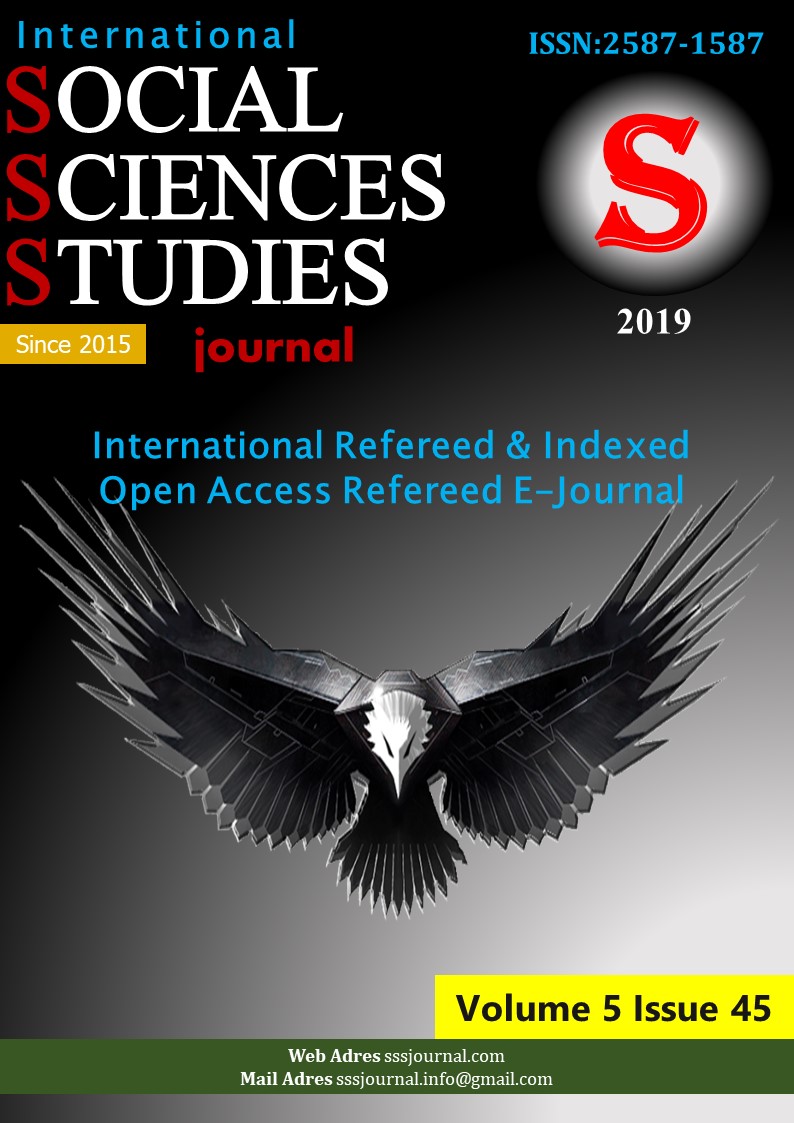Author :
Abstract
İlkel çağ insanının temel ihtiyacı sırasıyla beslenme, barınma, sonrasında da sıcaktan ya da soğuktan korunmak için örtünme ihtiyacıydı. Beslenme ihtiyacını erkek avcıların avladıkları hayvanlarda karşılıyorlardı. Giymek ihtiyacını karşılamak için ise; ilk önceleri avladıkları hayvanların derilerini kullandılar. Zaman içerisinde daha iyisine ulaşmak isteyen insanoğlu ip üretmeyi dolayısıyla da kumaş dokumayı keşfetti. Tunç Çağı’nda ise madenle tanışmasıyla birlikte madeni işlemek ve kullanmak için erkeğin savaşçı ve fiziksel gücünü keşfetti. İp üretip dokuma yapmak işini ise kadınlar üstlendi. İçinde bulunduğumuz çağdan 4000 yıl öncesine ait yazılı metinlerden anladığımız o yıllarda da kadınlarının farklı farklı işlerde sorumluluk aldığıdır. En yoğun görevlerinden birisi ise kumaş üretmek olmuştur. Bu çalışmada arkeoloji çalışmaları sonucu gün yüzüne çıkarılan tasvirli eserler, yazılı belgeler, kabartma ve heykelciklerdeki dokuma sanatı ile uğraşan kadınlar incelenmeye çalışılmıştır.
Keywords
Abstract
The First time human basic need wast on ourish, shelter, and then cover in order to be protected from the coldor the hot in the aftermath. They met the need for nutrition in the animals hunted by male predators. To the need to wear, The first touse the skin of the animals they hunt. The man who want store ach the better in time has not discovered the ropeand the refore discovered the fabric weaving.
During the Bronze Age, he discovered the figh terand physical strength of his manto manipulate and uset he mine together with his acqu aintan cewith themine. Women were involved in producing rope and weaving.
What we understand from the written texts of 4000 years before our age is that women take responsibility in different jobs. One of the most intensive tasks was to produce fabrics.
In this study, it is tried to examine the women who are dealing with the art of weaving in the depictions, written documents, reliefs and figurines which are unearthed as a result of archeology studies.
Keywords
- BARBER, E.J.W. (1991). PrehistoricTextiles: The Development of Cloth inTheNeolithicandBronzeAgeswith Special Reference totheAegean, Princeton: Princeton UniversityPress.
- BROUDY E, (1979). Thebook of looms. London: Universtypress of New England.
- ÇAMBEL H,. BRAIDWOODR. J, ÖZDOGAN M, SCHIRMER W, (1990). “1988 Yılı Çayönü Kazıları”, Ankara: XI. KSTC.I, Antalya 18-23 Mayıs 1989, AÜ Basımevi.
- CLARK. L., (1983). Notes on Small TextileFramesPictured on GreekVasesAJA 87.
- CLARK. L., (2005). Notes on Small TextileFramesPictured on GreekVasesAJA 87: s.93.1983.Deighton. H. J. “Eski Atina Yaşantısında Bir Gün,Linda Hennessy’in Resimleri İle”,.H. Kökten Ersoy (Çev), İstanbul: Homer Kitapevi ve Yay.
- DARGA, A.M., (1984). Eski Anadoluda Kadın. İstanbul: İstanbul Üniversitesi Edebiyat Fakültesi Yay.
- DOĞAN-ALPARSLAN, M., (2003). “Hititler Dönemi’nde Esnaf ve Zanaatkarlık”, Osmanlı Öncesiile Osmanlı ve Cumhuriyet Dönemlerinde Esnaf ve Ekonomi Semineri 1, İstanbul: İstanbul Üniversitesi Edebiyat Fakültesi Tarih Araştırma Merkezi.
- DONBAZ, V. (1996). “Kültepe Tabletleri Işığında İ.Ö. 2000-1760 Yıllarında Anadolu’nun Sosyal Yapısı”, Ankara: 1995 Yılı Anadolu Medeniyetleri Müzesi Konferansları.
- KARAOĞLAN, H., (2010). “SeyitömerHöyüğü’nde Bulunan M.Ö. II. Bin’e Ait Dokumacılıkla İlgiliBuluntular” Kütahya: Yayımlanmamış Yüksek Lisans Tezi, Dumlupınar Üniversitesi Sosyal Bilimler Enstitüsü Protohistorya Ve Önasya Arkeolojisi Anabilim Dalı.
- KARAOĞLAN H. (2017). “M.Ö. 2000’ De Anadolu’da Kumaş Üretimi (Arkeolojik BuluntularIşığında)” Yüzüncü Yıl Üniversitesi Sosyal Bilimler Enstitüsü Dergisi Afro-Avrasya Özel Sayısı, ISSN: 1302-6879, Cilt :1.
- KARASU, C., 1997 (1998). “Hattuša-Boğazköy Arşiv-Kitaplık Sistemleri Üzerine Bazı Yorumlar”, Emin Bilgiç Anı Kitabı, Anadolu Arşivleri/ArchivumAnatolicum 3.
- MEMİŞ. E., (2002). “Eskiçağ Türkiye Tarihi En Eski Devirlerden Pers İstilasına Kadar”, Konya: Çizgi Kitapevi Yay.
- OBERHUBER, K. (1972). DieKulturdes Alten Orients .Athenaion, Frankfurt/Main.
- ÖZ, E., (2008). Kültepe Tabletleri Işığında M.Ö. II.Bin’de Kadının İş Hayatındaki Yeri, Sosyal Bilimler Enstitüsü Dergisi Say :25 /2 .
- PARROT, A. (1962). “LesFouilles de Mari, 12ecampagne (automme 1961)”, Syria 39.
- POLLOCK, S. (1999). Ancient Mesopotamia. Cambridge UniversityPress, Cambridge.
- RYDER M. L. (1965). “Reports of TextilesFrom Çatal Hüyük” AnatolianStudies, Vol. 15.
- YAKAR, J. (2000). The Ethnoarchaeology of Anatolia. RuralSocio-Economy intheBronzeandIronAges. Yass Publications in Archaeology of theInstitute of Archaeology, TellAvivUniversity. Graphit Pres, Jerusalem.
